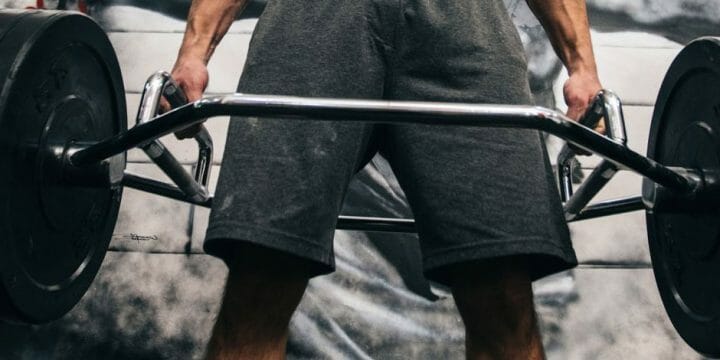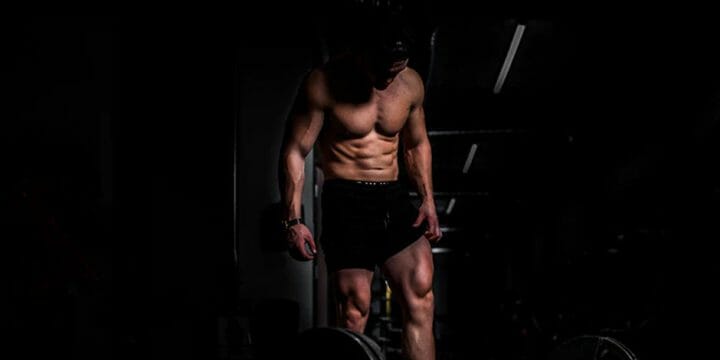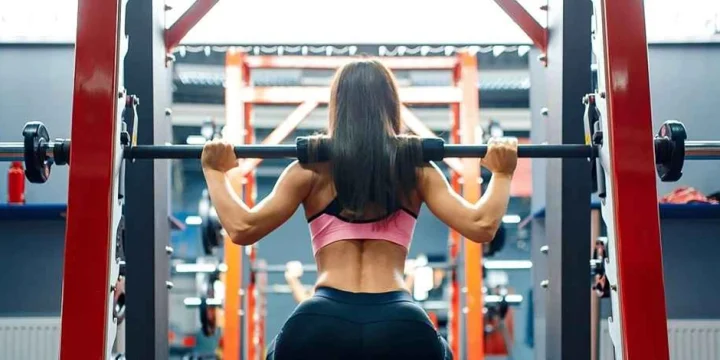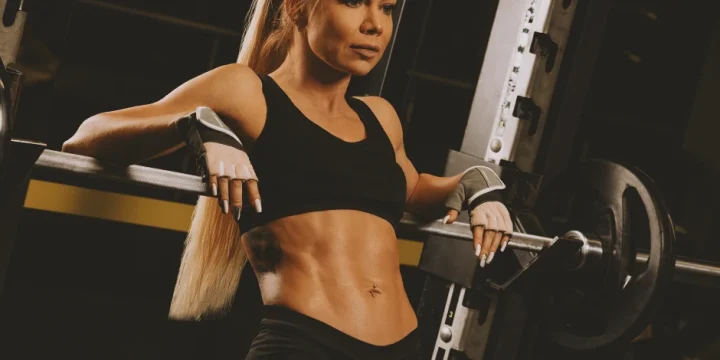One thing a lot of newcomers to training with free weights get wrong is correctly counting the weight of the squat bars they use.
As a personal trainer, it's part of my introduction routine with clients, as wrongly counting the weight of different types of barbells leads to training mistakes and even potential injury.
The worst thing you can do is just count the weight plates and ignore the bar's weight.
So, to help you accurately get an idea of how much different Olympic bars and typical squat bars weigh, I did some research at a few gyms.
I checked the weight range for different types and collected that information to share with you.
Quick Summary
- Squat bars come in various types, such as standard (45 lbs), hex (35–65 lbs), or safety (60 lbs).
- To avoid training mistakes and potential injury, it's crucial to accurately count the weight of different squat bars, including their variations in design and weight.
- Olympic bars, adhering to International Weightlifting Federation standards, uniformly weigh 44 lbs, highlighting the importance of standardized equipment in professional settings.
- It's essential to prioritize good form over lifting heavier weights, as demonstrated by the suggestion for male beginners to consider using lighter women's barbells.
How Much Do Different Types Of Squat Bars Weigh?

Here are the weight ranges for the most commonly used squat bars.
Standard Squat Bar
The traditional squat bar weighs 45 pounds, and these are the typical 7-foot-long ones you see in most squat racks. They do come in slight variations in center knurling and even thickness.
The wider knurling patch, while beneficial for grip, might be less comfortable for the hands during prolonged training sessions.
Either way, you should also see the weight etched into the bar to confirm this for sure.
This squat rack bar is also commonly used for bench presses, overhead presses, and deadlifts.
Olympic Squat Bar
As stated by the International Weightlifting Federation, an Olympic barbell will also generally have a standard weight of 44 lbs. This is a typical straight bar that is also 7.2 feet in length [1].
So how is this any different?
It all comes down to the design of the ends of the bars. An Olympic barbell will have rotating sleeves at the end. As a result, the bar will easily rotate as you go through different powerlifting moves.
And let's just say that you don't want to use a standard bar for Olympic-style lifting.
Women's Barbell

The standard weight for women's Olympic barbells is 35 lbs, which is dictated by the Olympic standards committee.
These bars are generally shorter at 6.5 feet and a bit slimmer as well.
Some male beginners should possibly consider using these bars due to their lower weight. I know this might require some men to overcome their egos, but good form always trumps more weight.
They also have a rotating sleeve for powerlifting, just like the standard male one.
Hex Bar
A hex or trap bar is very different from your typical straight barbell. It's one of the most specialty bars available, and it provides flexibility, especially for certain types of deadlifts.
Based on my research in several different gyms and on about ten different bar types, I found that the hex bar weight ranges from 35 lbs to 65 lbs. That means it's even more important to check the weight rating on these bars before you load them up.
Smith Machine Bar
Many of my clients who don't feel comfortable with completely free-standing squats usually head to a smith machine.
These have a barbell guided by rails, which means that it's less likely that you lose balance forward or backward.
With Smith machine bars, I also found a lot of weight ranges depending on the brand and size of the machine.
I saw everything from 30 to 55 lbs, with the lighter ones typically on the smaller Smith machine frames that attach to a wall.
Safety Squat Bar
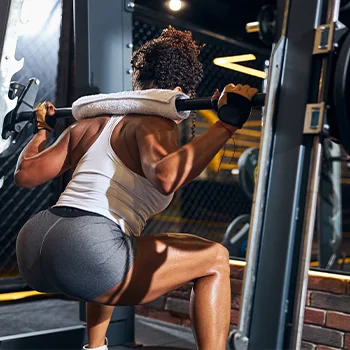
Safety squat bars have a slightly different shape from the standard ones, and they are designed to bring the weight plates closer to the ground.
The result is that it's easier to maintain your balance with a safety squat bar.
They also have padding in the center to reduce the pressure on the shoulders.
All this design change adds more weight, and I found that they typically weigh about 60 lbs.
Multi-Grip Bar
Multi-grip bars are typically shorter than a standard safety bar, and they offer athletes more grip flexibility when lifting weights.
They usually work best for different types of bench presses, but they can also work well for squats.
Even though they are significantly shorter, the ladder design of the grip section makes up for some weight loss. These typically weigh about 40 lbs, but I've also found some that weigh up to 55 lbs.
Are There Other Things To Consider?

After checking your barbell's specs, it's time to pile on the weight plates for your squats. But if you're lifting lighter, remember the extra weight from safety gear like clips and locks.
Clips
I'm a fan of spring clips; they're a breeze to use with any weight plate and quick to release between sets.
Most are light, just a few ounces, but beefier ones for Olympic lifts can weigh more. Using these hefty clips on a light load might tack on an extra pound, so keep that in mind.
Locks
Olympic weight plates often use locks that work like clasps. Nowadays, most gyms have plastic locks that are practically weightless.
However, if you're lifting light and using metal locks, they might add a pound to your load.
Related Articles: 10 Best Barbells For Your Home Gym
FAQs
Should You Buy a Heavier Squat Bar?
No, you shouldn't always choose a heavier squat bar. While this might make sense for bodybuilders and performance athletes, most people could be better off with a lighter bar to have more flexibility in lower weight ranges.
Should Men and Women Use Different Weight Squat Bars?
Yes, men and women should use different weight squat bars. Most women will be working with lighter total weight ranges, and the lighter bar will give them a lot more flexibility.
References:
- https://iwf.sport/wp-content/uploads/downloads/2020/01/IWF_TCRR_2020.pdf
About The Author
You May Also Like


